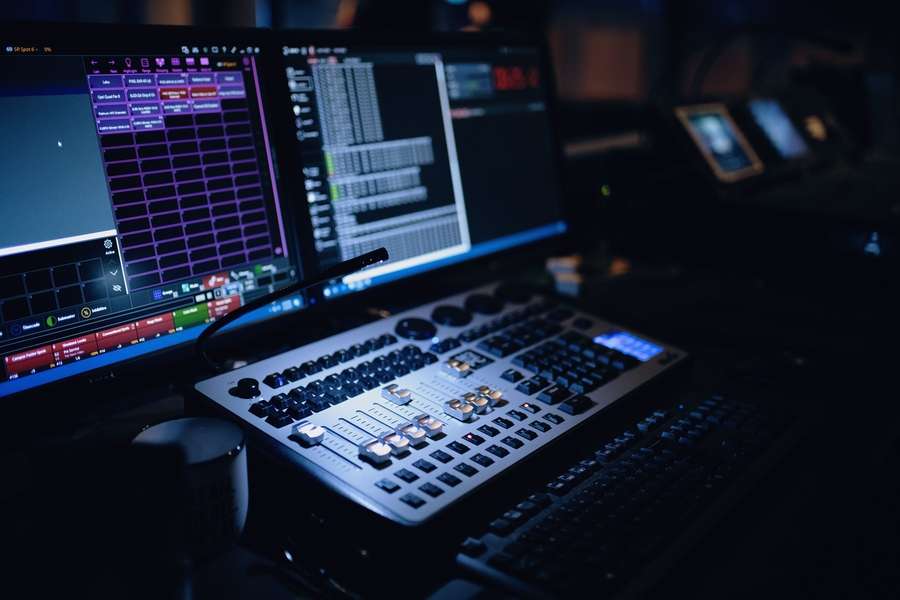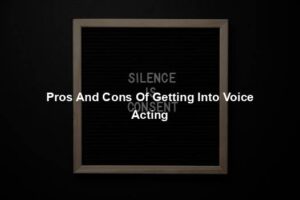
What is dubbing in film-making?
Dubbing, mixing, or re-recording is a post-production process used in film-making and video production in which additional or supplementary recordings are “mixed” with original production sound to create the finished soundtrack.
Have you ever wondered what really goes into ensuring that a film dubbing process is done in the best way? You don’t have to wonder anymore because that’s what we will look at in this article. Since time immemorial, dubbing films has been a process that is widely used by production houses to localize their foreign films to pass a message or making it relatable to all audiences across the globe. Dubbing is a process that is widely used, it has definitely passed the test of time and stood its ground as a film process that is important and beneficial to production houses.
For starters, know that dubbing is a multi-faceted process that requires the prowess of a lot of professionals. It is not one process that only deals with one or two professionals. The collaboration of several filmmaking professionals is indispensable- You’ll need dubbing specialists and actors with an understanding of the nuances of dubbing performance.
These professionals all help in ensuring that the finished dubbed film is in the best and perfect form possible. From translators (who sometimes end up being from the countries where the Native speakers of your target language live in) to voice-over actors or foreign performers and specialists on sound engineering, everyone must get involved. Also holding auditions to verify the actors’ voices, age, and tone so it fits with the original character.
Dubbing is really the same as producing an entire film from scratch but without the video aspect because it deals 100% with audio-only. That is why the need for good and professional voice actors is important and producers hold auditions to get the most perfect voice actors who fit the original film actors. From creating a whole script in the target language to directing the voice actors in bringing out the different scenes in the best way, dubbing is really a whole film production process.
What Exactly Does Dubbing Involve?
- When a video is dubbed, a cast of professional voice actors replace its original dialogue with a new audio track in a different language. So a movie shot in one language has that language’s dialogue replaced with actors speaking in a localized language.
- Dubbing is most familiar to audiences as a means of translating foreign-language films into the audience’s language. When a foreign language is dubbed, the translation of the original dialogue is carefully matched to the lip movements of the actors in the film. The process usually takes place on a dub stage. After this sound editors edit and prepare all the necessary tracks – dialogue, music, and sound effects. Dubbing mixers proceed to balance all of the elements and record the finished soundtrack.
- In some instances, movies intended for foreign distribution are prepared in a version with an M&E (music and effects) track separate from the dialogue to facilitate dubbing. Today, dubbing enables the screening of audiovisual material to a mass audience in countries where viewers do not speak the same language as the performers in the original production.
- In francophone Africa for example, most foreign movies (especially Hollywood productions) are shown dubbed in French. These movies are usually imported directly from French film distributors. The choice of movies dubbed into French can be explained by the history of colonization of these countries by France and the widespread use of the French language (among the intellectual elite).
What is The Dubbing Process?
Below we will look at the different important steps important in creating the best-dubbed film possible.
1. Transcription and Time-coding (Spotting)
- A video master is sent to the localization provider, including a script, the video, and an M&E. The provider should clarify the technical specs required for the master elements. The script is then time-coded. A time-code is a series of numbers generated in a controlled sequence by a timing system. In videos and other recorded media, time-code can be added to a recording in order to facilitate logging, synchronization. If you don’t have a script, the provider will transcribe the dialogue. Transcription can simply be defined as the transformation of spoken dialogue in a video into written text. A dubbing stem script is created. It is analyzed frame-by-frame, with every pause in the dialogue; taking into account tonal inflections and general tenor to ensure the nuance of the performance is transmitted to the translators.
- The timing aspect of the script is very important. This is what we term as time stamps or time codes. The best thing to do is to get a translator who also knows how to create scene time stamps for every scene in the original film. This will ensure that a production house cuts down on their expenditure unlike getting a professional time stamper and then eventually getting a translator. Creating timestamps usually helps the voice actors know the time where different dialogues take place and how long the dialogues are so they don’t end up having short or long dialogues when compared with the original film dialogues.
2. Translation and Adaptation
- Translation is the communication of the meaning of a source-language text by means of an equivalent target-language text. A low-resolution reference file of your video and master script are sent to the target-language team who may reside in-house but often work off-site. Specialized translators then work with the dubbing script to translate it and adapt it by matching the length of each line of dialogue to the original script. Expert localization providers use algorithms to count the syllables of the script in the original language. This is key for the adaptation of the translated script to the exact timing and tempo of the original language recording. This is especially important for precise lip-syncing. Voice-casting usually occurs while translators tackle the script. (For more on translation, check out this in-depth article on what is translation …).
3. Casting
- The next step is finding the best talent for your dubbing process. In case you did not know, there are professionals out there who specifically specialize in voice acting and these are the people who you like the casting team should strive to work with, in your dubbing process. There are experts out there who specifically work in film dubbing as actors and with years of experience, they have been able to master how to manipulate their voices to fit specific voices. When choosing a voice actor, be on the lookout for their voice range and lip movement.
- The cast you work with must be able to mirror the tone and inflection being used by an actor in the original film. A perfectly dubbed film is unnoticeable to the viewer because that’s exactly how it is supposed to be. When a viewer can instantly tell that a film is dubbed then the whole essence of dubbing the film will be lost. If the original actor is opening his mouth, the sound shouldn’t be that of a consonant such as “M” or “B” where the dubbing will differ notably from the authentic acting. Even if it’s not possible to equal the original motion, it would help the dubbing talent to watch the unedited movie.
4. Directing and Dubbing (Recording)
- This involves actors recreating their character under the guidance of the director and recording of the lines. This is a very laborious and difficult process, as apart from acting, they must be familiar with lip-syncing techniques. Depending on the country this can be rhythm band, sound sections, beeps, etc. We can say, this is the step where all the magic happens. It is the step where the voice actors get into a recording studio and do their thing in the best way. A lot of filmmakers who specialize in dubbing usually have their own recording studios, which cut down on costs of either outsourcing recording studios or building new ones. If you are one filmmaker who does not have access to recording studios, it is important to book an equipped space for dubbing, like a professional studio.
- There are two different techniques that are used when recording for dubbing. These two techniques are the standard technique and the other is known as the rythmo band technique which is rarely used.
- The standard technique is one where the voice actors read the scripts out loud while watching the original film. There are usually 3 beeps to prepare them, and then they end up reading out their lines on the forth imaginary beep. This technique is repeated before each line of dialogue. The rythmo band technique is mostly used in Canada and France. While the movie is being played, at the bottom of the screen the performers will read lines of dialogue that show exactly how the new words should be filled in during the original character’s acting and mouth movements. This method helps to achieve a greater synchronization with the character’s lips.
- The dub is recorded by professional voice actors and the audio track of the original video footage is will be mixed with the alternate language recordings of the dialogue. Word choice is important as the translated video must be synchronized with the lip movement of the actors on-screen. Following the thorough preparation of the script, the voice talent and directors go into the recording studio. Directors work closely with translators, they guide the actors to tonal, intonation, linguistic accuracy, and expressive excellence. Quality control editors then work with the dialogue in the target language to ensure the lip-syncing to the video is accurate and well-timed. In some instances, selective technical adjustments are made to imperceptibly slow down or speed up the video in order to improve upon the lip-sync of the dub. This will ensure that the actors’ voice-over recordings match the mouth movements exactly. It takes patience and a meticulous eye but will make all the difference in the final product.
5. 1st Quality check \ control
- After the recordings have been done by the voice over actors, the recorded voice tracks are put line in line with the original audio tracks of the film then sent for a quality check. On this step, this is done in order to ensure that there are no missing dialogues and that all the dialogues were recorded during recording. You don’t want to send the recordings straight to the sound engineer for synching and mixing without ensuring that all the dialogues have been recorded into the target language.
6. Sent to Sound engineers For Mixing
- After the recordings have been done by the voice actors, the recordings are sent to the sound engineers so that they can further work on the technical part of this whole process.
- This is the stage where the new dialogue tracks are converged with the original movie sound. This has to be done so delicately and with a lot of keenness to ensure that the sound editing technics are handled well to layer the dialogue in the correct way.
- Basically, the sound engineers are in charge of ensuring that the recorded clips are synching with the original scene tracks so that the final dubbed film doesn’t come out sounding off from the original characters lip movements. They ensure that the recorded dialogue’s accuracy and proper timing of the video and the lip-syncing. Some technical adjustments may be made at this stage, such as speeding up or slowing down the video to improve the lip synchronization. (For More On Mixing, Check out this in-depth article on what re-recording (dubbing) mixers do in filmproduction…).
7. Music And Effects (M&E)
- The original voices forms of the main soundtrack are dismantled to create M&E, which is music and effects. Once the voices in the foreign language are recorded, editors fix the dubbed dialogue in the right places of the M&E so that the blend sounds fluid.
- This is a very delicate step because the sound engineer must ensure that the music and effects really go in line with the scenes of the voiced audio to stick to the original context of the original film.
- Sound engineers create a mix that incorporates the Music & Effect tracks to the original video.
8. 2nd (Final) Quality check \ control
- Quality Control editors then come again to work with the mixed product in the target language to ensure that everything is up to required standards if not the mix is sent back to the mixers for rectification. Since this is the last step, one ensures once more that there are no missing lines or reactions on the final recorded audio. These are common mistakes that you as a viewer can note on dubbed films if you are very keen. After this step, the dubbed film is ready to be presented to the target audience for viewing.
9. Ready for audience
- After all the steps above, your film is readily localized in the dubbing process and you can share it with your target audience and start getting feedback on how well it is doing.
Complete article on [the technical process of dubbing…]
Where dubbing has been successful?
- In non-English speaking nations, dubbing is most commonly used in films produced for children and, in some cases, young adults. Children’s programs on television also tend to be dubbed, as are commercials, although these are not limited to being targeted towards a younger audience only. The Walt Disney Studios Post Production Services, for example, has a rich history in Dubbing dating back to the early 1940s when Fantasia was mixed in the Main Theater. Fantasia went on to win several technical achievement awards from the Academy.
- Telenovelas – A telenovela is a type of a limited-run television serial drama or soap opera produced primarily in Latin America. Commonly described as Spanish soap opera, many telenovelas share some stylistic and thematic similarities to the soap opera familiar to the English-speaking world. In the 2000s, Latin America and Asia altogether emerged as the biggest producers of telenovelas, which evolved out from soap operas to form another category of television drama and were one of the most common forms of popular entertainment in the world.
- The Indian film industry or Bollywood as the Hindi movie-making machinery is popularly known, has been an interesting case study – not just for movie fans but also for the business world. It has managed to transition across cultures and countries and reach almost every part of the world with very little formal (if any) marketing.
What is The future of dubbing?
- Thanks to the boom in popularity of digital channels and internet streaming services for film, TV, and video, content owners are seeing more opportunities than ever to sell new titles and back catalog feature films and TV series in new territories. This has led to a growing demand for content localization across the world. What’s more, this is set to grow by as the years go by.
Dubbing and artificial intelligence
- How A.I. will disrupt the dubbing industry? I understand that the ideas hereby presented aren’t as easy to produce as they sound, but I believe they are doable in the mid-term future.
- Translating the movie script (using AI, why not?). Today’s translation services are pretty good, but they will continue to evolve to perfection.
- Mimicking the actor’s voices and pronouncing the words of the translated script. This happens using the voices of the actors from the original audio to train an algorithm to mimic their voice and feed the translated script to the new voice to obtain the translated audio track.
- Synchronizing the video to suit the new audio better. This includes generating extra frames to adjust the length of the speech in different languages and using deep-fake video technology algorithms already existent to sync the lips of the actors to the new track.
What are some interesting facts to know about dubbing?
- The Germanophone dubbing market is the largest in Europe. Dubbing films is a traditional and common practice in German-speaking countries.
- In Spain, some dubbing actors have achieved great popularity for their voices. For example Constantino Romero (who dubs Clint Eastwood, Darth Vader, and Arnold Schwarzenegger’s Terminator, among others).
Conclusion
- As you see, dubbing is a process that requires much more work and resources. It is not simply a matter of trying to constrain your translation to words per second or to channel the information being said into a condensed textual version. Dubbing is particularly difficult to pull off for actors and translators alike because every line of speech must closely mimic the mouth movements of the actors on the screen. Some languages expand in translation. Greek or German speakers, for example, tend to use more words than their counterparts who speak other languages. This means translators must choose words precisely in order to carry over the same meaning as the original without altering the length of each character’s screen-time.
- In summary, issues to note about dubbing are:
- Dubbing includes the addition of music and sound effects to the original dialogue.
- Dubbing includes the omission or replacement of unwanted or poorly recorded audio.
- Dubbing includes the re-recording of the entire dialogue, narration, and music.
- Dubbing is considered successful when it can coordinate the actor’s lips movements with the sounds produced by the dubber, especially those sounds that make use of the lips.
- The script needs to be adapted accurately into the target language to make sure that the dialog shares the same linguistic meaning.
- Dubbing should convey the same emotional impact, thanks to voice artists who must also be skilled actors.








Comments (3)
Kuldeep Singh
February 25, 2020Thank you for sharing. voice over industry expanding day by day and people love those movies which are dubbed in other languages
we also provide the best voice over services in India.
Vijay Shekhawat
August 17, 2020True, with the rapid exchange of video content across the globe, it’s about time people understood what dubbing really is and how much effort it goes into making dubbed versions of video content. Very aptly put!
Polish News
December 17, 2020Ciesze sie z jego sukceslw, kazdy jest okupiony potezna praca, sercem i wysilkiem. Na drodze chwaly i slawy zachowaj incognito.
Comments are closed.